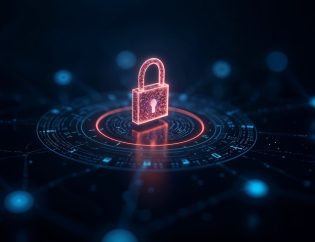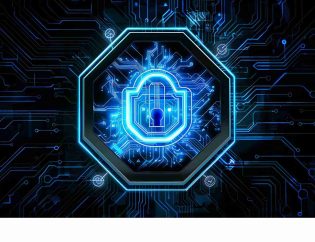
Table of Contents
Introduction
Understanding Managed XDR vs. SIEM
How Managed XDR Enhances Threat Protection
The Role of SIEM in Cybersecurity
Managed XDR vs. SIEM: A Comparative Analysis
Benefits of Choosing Managed XDR
Advantages of SIEM
Key Differences in Implementation
Expert Opinions and Industry Quotes
Customer Testimonial
Conclusion
FAQs
Introduction
“In today’s cybersecurity world, businesses must choose between Managed XDR vs. SIEM for strong threat protection. Both solutions improve security but work in different ways. Managed XDR vs. SIEM provides real-time threat detection, but each has unique features that fit different needs. Understanding these differences helps businesses choose the best option.”
Understanding Managed XDR vs. SIEM
What is Managed XDR?
Managed Extended Detection and Response (XDR) is a security system that protects businesses from cyber threats by combining different security tools into one platform. It covers endpoints, networks, emails and cloud security to detect and stop attacks automatically. Managed XDR uses AI and machine learning to analyze threats in real time and respond quickly. Since it is fully managed, security teams don’t have to spend time monitoring everything manually. Instead, the system works in the background, identifying and stopping threats before they cause damage.
What is SIEM?
Security Information and Event Management (SIEM) is a tool that collects security logs from different systems, analyzes them and alerts security teams about potential threats. It helps organizations track unusual activity, find security issues and investigate past incidents. SIEM is useful for compliance reporting and spotting suspicious behavior, but it often needs manual setup and monitoring. Since it focuses mainly on log analysis, businesses may need additional security tools for real-time threat response.
How Managed XDR Enhances Threat Protection
1. Automated Threat Detection
Managed XDR uses smart AI technology to find threats instantly. It constantly checks data from computers, networks and cloud systems to spot anything suspicious. Unlike older security tools that only follow set rules, Managed XDR can learn and detect new threats, even before they are widely known.
2. Integrated Security System
With Managed XDR, all security tools work together in one system. It protects computers, networks, cloud storage and emails, making security stronger and simpler. Instead of using many separate security tools, businesses get a complete, easy-to-manage solution that improves protection and reduces effort.
3. Fast Threat Response
Older security systems need people to react when a threat is detected, which can take time. Managed XDR acts automatically to stop attacks. It can block harmful activity, disconnect infected devices and remove threats before they cause damage. This keeps systems running smoothly with less risk.
4. 24/7 Security Monitoring
Cyber threats can happen anytime, so constant security monitoring is essential. Managed XDR provides round-the-clock protection, checking for threats all day and night. It sends instant alerts and takes action quickly, so businesses can stay safe and one step ahead of hackers.
The Role of SIEM in Cybersecurity
Collecting Security Logs
SIEM collects security data from computers, servers and other devices in a company. It records important details like who logged in, what files were accessed and any unusual activity. This helps security teams keep track of everything in one place.
Detecting Threats
SIEM scans security data to find possible threats. It looks for strange activities, like too many failed login attempts or someone accessing data from a new location. If it finds something suspicious, it sends alerts so security teams can take action quickly.
Investigating Security Issues
If a cyberattack happens, SIEM helps find out what went wrong. It shows where the attack started, how it spread and what was affected. This helps security teams fix the issue and prevent future attacks.
Following Security Rules
Some industries, like banking and healthcare, must follow strict security rules. SIEM helps businesses keep records of security events and create reports to show they are protecting customer data. This helps companies avoid penalties and stay compliant.
Managed XDR vs. SIEM: A Comparative Analysis
| Feature | Managed XDR | SIEM |
| Threat Detection | AI-driven and automated | Log-based and manual |
| Response Time | Real-time automated response | Requires human intervention |
| Integration | Combines endpoint, network, and cloud security | Aggregates logs from multiple sources |
| Complexity | Simplified, managed solution | Requires extensive configuration |
| Cost | Predictable subscription model | High initial investment and maintenance |
Benefits of Choosing Managed XDR
Finds Threats Faster with AI
Managed XDR uses smart technology (AI) to quickly find and stop cyber threats. It works automatically, so businesses don’t have to spend time manually searching for risks. This helps stop attacks before they cause harm.
Less Work for Your Team
With Managed XDR, security experts handle everything for you. Your team won’t have to check thousands of alerts every day. Instead, they can focus on important tasks, while Managed XDR keeps your business safe in the background.
All-in-One Security Solution
Managed XDR brings different security tools together in one system. It protects devices, networks and cloud data at the same time. This means businesses don’t need to buy and manage many different security programs, saving time and money.
Stops Threats Before They Happen
Instead of waiting for an attack, Managed XDR actively looks for dangers. It keeps watching 24/7, finds hidden risks and prevents cyberattacks before they happen. This helps businesses stay ahead of hackers.
Advantages of SIEM
- Centralized Log Management: SIEM collects security logs from different sources and stores them in one place. This helps security teams monitor activities easily.
- Customizable Threat Rules: Organizations can set specific security rules to detect threats based on their needs.
- Historical Data Analysis: SIEM keeps past security records, helping analysts investigate previous attacks and prevent future threats.
- Compliance Reporting: Many industries have strict security rules. SIEM helps businesses follow these regulations by generating security reports automatically.
Key Differences in Implementation
- Managed XDR is a good option for businesses that want an easy and fully managed security system. It detects and stops threats automatically, so companies don’t need a big security team.
- SIEM is better for companies that have their own security experts. It collects security data, but the team must check and respond to threats manually. Large businesses that need more control often choose SIEM.
Expert Opinions and Industry Quotes
“The best way to protect against cyber threats is a layered security approach combining intelligence, automation and rapid response.” – Cybersecurity Expert
Managed XDR vs. SIEM: Which is right for your business? Managed XDR offers automated threat detection, while SIEM focuses on log analysis. Find the best fit for your security needs! 🔐 #CyberSecurity
— Hyper Secure (@HyperSecure) February 15, 2025
Customer Testimonial
“Since implementing Managed XDR, our threat response time has improved dramatically. Our security team now focuses on strategy rather than chasing alerts.” – IT Director, Tech Company
Conclusion
Both Managed XDR and SIEM help protect against cyber threats, but they work differently. Managed XDR is a smarter and automated solution that detects and stops threats in real time. It requires less manual work, making it a better choice for businesses that want fast and efficient security.
How Hyper Secure Helps
Hyper Secure is a leading Managed XDR company that helps businesses stay safe from cyber threats. We offer advanced threat detection, quick automated responses and easy security integration. Our solutions make cybersecurity simple and strong, giving businesses real-time protection with less effort.
FAQs
How does Managed XDR differ from SIEM?
Managed XDR offers automatic threat detection and response, while SIEM collects and analyzes security logs, requiring manual investigation.
Which option is more suitable for small businesses?
A fully managed and automated approach is ideal for small businesses, as it requires minimal in-house expertise.
Is it beneficial to use both solutions together?
Yes, combining them can enhance security by providing both broad visibility and automated threat response.
How does Managed XDR reduce the workload for security teams?
Managed XDR automates key security tasks like detecting, analyzing and responding to threats, reducing manual effort.
Can SIEM detect threats in real time?
SIEM helps analyze security logs but relies on human intervention to detect and respond to threats.






